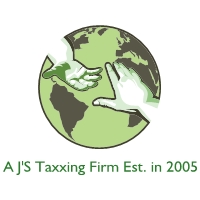
It may seem that we just got through with the 2021 income tax season, but there’s already another tax deadline waiting in the wings. The Internal Revenue Service is reminding taxpayers who pay estimated taxes about their second-quarter installment deadline: June 15.
People generally pay estimated taxes when they have income that isn’t normally subject to withholding. The taxpayer may have income from self-employment, interest, dividends, rent, gains from a sale of assets, prizes, or awards.
Some taxpayers also may have to pay estimated tax if the amount of income withheld from their regular income—whether it’s salary, pension, or some other source—just isn’t enough to avoid a tax bill of $1,000 or more when they file. That $1,000 threshold is the same for individuals and business taxpayers, such as sole proprietors, partners, and S corporation shareholders.
Corporations, on the other hand, usually make estimated tax payments “if they expect to owe $500 or more in tax when they file.” The IRS recommends that corporate filers consult Form 1120-W, Estimated Tax for Corporations, for more information.
There are special rules governing estimated tax payments for some specific groups of taxpayers, including farmers, fishermen, higher income taxpayers, casualty or disaster victims, taxpayers who are recently disabled, recent retirees, and individuals whose income is received unevenly during the year.
Individuals who aren’t filing a business return can go online to the IRS Interactive Tax Assistant to see if they’re required to pay estimated taxes. Form 1040-ES, Estimated Tax for Individuals, has a worksheet with details on who has to pay estimated tax.
More information for individuals can be found in Publication 505, Tax Withholding and Estimated Tax. This publication can be especially helpful to those who have dividend or capital gain income, owe alternative minimum tax or self-employment tax, or have some other special situation.
Avoid nasty tax-time surprises
The Internal Revenue Service views income taxes as a pay-as-you-go proposition. That means taxpayers should pay most of their taxes owed during the year as the income is received.
There are two ways to reach that goal:
- Withholding from pay, pension or government payments such as Social Security
- Making quarterly estimated tax payments during the year
When taxpayers don’t withhold enough from income to cover their tax bill, they can face an underpayment penalty from the IRS. The way to avoid this is to either owe less than $1,000 at tax time, or to pay most of the tax bill during the year.
For this year, that means taxpayers should be making payments of at least 90 percent of the tax they expect on their 2021 return. Most taxpayers who pay at least 100 percent of the tax on their tax year 2020 return may also avoid a penalty.
Here again, some special rules exist for certain groups of taxpayers. For more information, check out Form 1040-ES, Estimated Tax for Individuals.
In most cases, taxpayers make their estimated tax payments in four equal amounts, paid quarterly. However, if a taxpayer receives their income unevenly during the course of the year, they may be able to vary the amounts of their quarterly payments to lower their underpayment penalty or even avoid it altogether.
Form 2210, Underpayment of Estimated Tax by Individuals, Estates and Trusts, can show taxpayers if they owe a penalty for underpaying their estimated tax.
Third-quarter payments are due by September 15; fourth-quarter payments are due by Jan. 17, 2022.
Making adjustments …
Taxpayers who get salaries and wages can avoid having to pay estimated tax simply by asking their employer to withhold more taxes from their paychecks. This is done by submitting a new Form W-4 to the employer.
The IRS Tax Withholding Estimator can help taxpayers who receive a paycheck make sure they have the right amount of tax held out every pay period. This tool offers taxpayers a step-by-step method of checking their withholding levels so they can avoid an unexpected tax bill or penalty at tax time.
Form 1040-ES also has instructions to help taxpayers figure their estimated taxes.
Making payments …
Taxpayers looking to pay estimated taxes have some options. For speed and ease of use, the IRS recommends its Direct Pay service from the taxpayer’s checking or savings account. Another choice is to pay using a credit or debit card. Both options are available online at IRS.gov and through the IRS2go app.
Note, however, that the payment processor—not the IRS—charges a fee for debit and credit card payments.
A third option is to use the Electronic Federal Tax Payment System (EFTPS) to make an estimated tax payment.
Corporations have to use electronic funds transfer to make all federal tax deposits, including installment payments of estimated tax. Generally, this is done through the EFTPS, but if the corporation wants a different option, it can arrange for its tax professional, financial institution, payroll service or other trusted third party to make electronic deposits on its behalf.
Visit IRS.gov/payments for more information on all payment options.
Source: IR-2021-125
